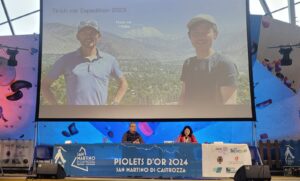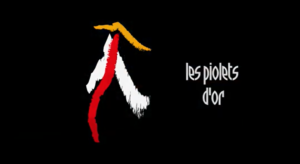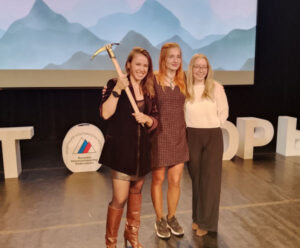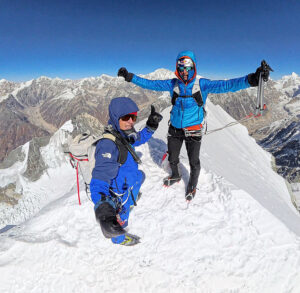The Hungarian National Climbing Team has started its winter expedition to 5,193m Shkhara, Georgia’s highest peak.
Viktor Agoston, Laszlo Szasz, David Kocsis, and Andras Rusko aim to open a new route in alpine style on the south face of the peak. They made a previous attempt four years ago.
The 2,300m south wall has been climbed in winter only once, by Georgian alpinists Archil Badriashvili and Giorgi Tepnadze in February 2018.
Since the Hungarian team arrived in Georgia last Friday, they’ve made some progress in very unstable weather. Climbing and timing strategies will play an important role. Thanks to their short satellite reports, we can follow their progress.

Ushguli is the nearest inhabited place to Shkhara. Photo: Hungarian National Climbing Team
Arrival, permits, and buffalo meat with the border guards
After landing in Georgia, the team headed to Kutaisi and from there to Ushguli. Ushguli is a community of five villages, located at the head of the Enguri gorge in Svaneti. It is one of the highest continuously inhabited settlements in Europe, located at 2,200m, near the foot of Shkhara.
In Ushguli, the team divided into two pairs and went to acclimatize. Two climbers headed for the glacier and the other duo warmed up on a nearby 3,000m mountain.
The quartet then headed to Shkhara, ready to climb up the Beknu Khergiani route in the event of a short weather window.
“We want to take advantage of a three to four-day weather window on the wall. According to the locals, there is more snow than in the last four or five years,” the team wrote after their arrival.

The Hungarian team with the Georgian board officer and his dog. Photo: Hungarian National Climbing Team
The following day, they looked at their valley and found it covered by 40-60cm of fresh snow. While they waited on the weather, they sorted permits with the border guards. Shkhara lies near the Russia-Georgia border and is a sensitive area.
While picking up their papers, Kocsis and Rusko were invited to eat buffalo meat with the border guards. The team reports that the Georgians have treated them very well and are interested in their expedition.

There is a lot of snow in the region this year. Photo: Hungarian National Climbing Team
Arriving at the glacier
The next day, the team reached their camp under the glacier. The weather was warm but it was snowing and it was very hard to pull the sleds with ten days’ worth of food and equipment. Meanwhile, the four-day weather window they had identified two days earlier seemed to be narrowing based on updated weather forecasts.
After one meter of snow fell on Jan. 22, the team decided to stay in base camp because it was avalanche-safe. On Monday they were waiting for the cold and for conditions to stabilize.
“The cold will not be a problem. Perhaps the precipitation will finally stop and there will be four days of clearer weather, but in return, the wind seems to be quite strong in the higher regions. Precipitation forecasting is the trickiest, meteorological models can’t calculate it very well here. So we’ll believe these four clear days when we see them,” Agoston wrote.

A photo of the landscape. Photo: Hungarian National Climbing Team
Yesterday, on Jan. 23, the four climbers made it through the lower 3km section of the glacier in six hours. They reached the entrance to the route in chest-deep snow. They decided to camp on the glacier, weighing their options.
Kocsis wrote that they would be to try to go up to Camp 1 today. From there the route is seriously uphill. The temperature yesterday evening was -20°C. There may be a very short weather window from Saturday, but it seems that more precipitation will arrive. This could last for several days.
For the time being, stable weather is not in sight, but the team will attempt the climb if they have the chance.

The team’s tracker shows base camp just before the glacier. The start of the climbing route is at the top of the photo. Photo: Hungarian National Climbing Team






